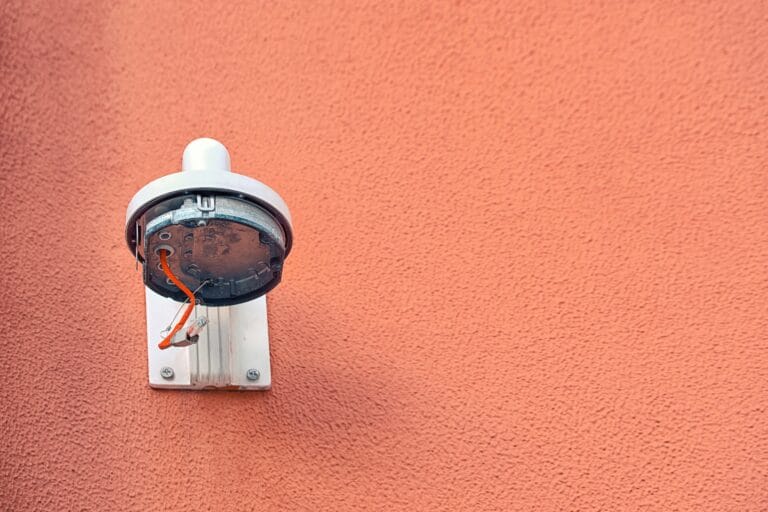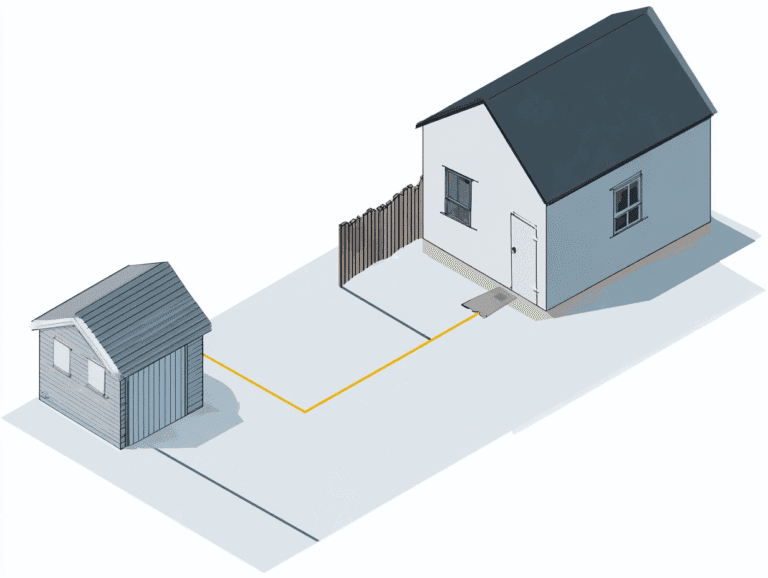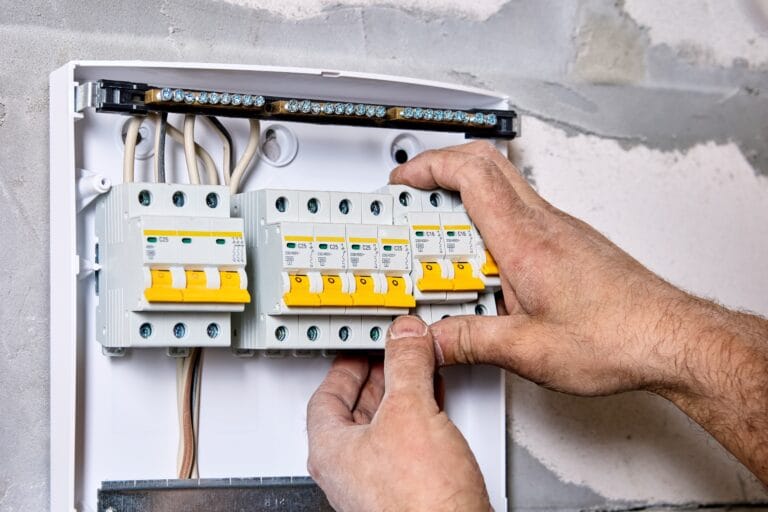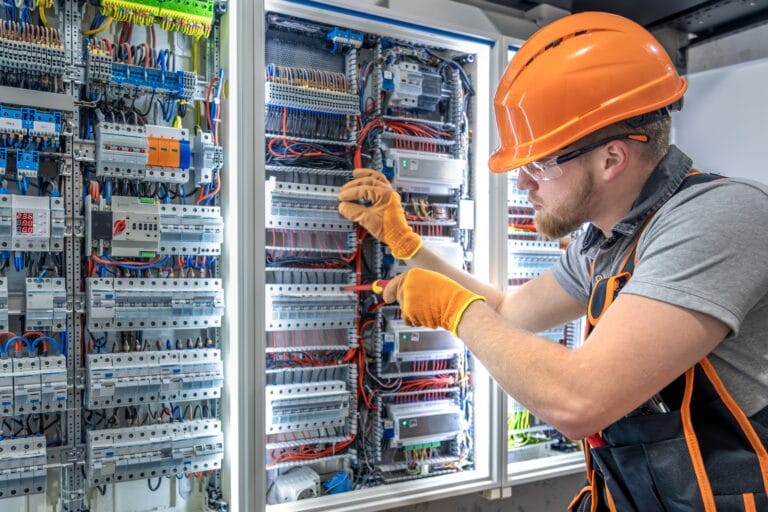Earthing vs. Bonding: What’s the Difference and Why It Matters for Safety
Introduction
Electrical Safety in Australia: A Non-Negotiable Priority
Australia places an unwavering emphasis on electrical safety. It is not just a regulatory requirement; it is crucial to protecting lives and properties across the nation. The Australian standards, particularly AS/NZS 3000:2018, ensure that electrical installations meet stringent safety benchmarks.
Earthing and Bonding: Pillars of Electrical Safety
Within this framework, two essential concepts stand out—earthing and bonding. While they might sound similar, each plays a distinct role in safeguarding against electrical hazards. Earthing primarily involves connecting parts of an electrical system to the ground, providing a path for fault currents to safely disperse. In contrast, bonding ensures that metallic parts are electrically connected, reducing the risk of electric shock by equalizing potential differences.
Purpose of This Article
This article delves into the crucial debate of Earthing vs Bonding in Australia, clarifying their differences and highlighting their importance to electrical safety. By understanding these key concepts, readers can appreciate how effective implementation prevents incidents such as electric shocks and fire hazards.
Understanding Earthing
Definition and Role of Earthing in Electrical Safety
Earthing is a fundamental aspect of electrical safety, serving as a protective measure to prevent electric shocks and equipment damage. By connecting electrical systems to the ground, earthing provides a low-resistance path for fault currents, directing them safely into the earth. This minimizes the risk of electric shock during faults, ensuring both human safety and equipment integrity.
Overview of the MEN System in Australia
Australia employs the Multiple Earthed Neutral (MEN) system, a method that integrates earthing with neutral connections. The MEN system is crucial in maintaining stability within electrical networks by preventing any potential build-up on neutral conductors. Compliance with the AS/NZS 3000:2018 standards ensures that these systems are implemented correctly, offering robust protection and reliability.
Different Types of Earthing Systems
There are several types of earthing systems used in electrical installations:
- TT System: In this configuration, the earth connection is separate from the power network’s earth. It’s primarily used in rural areas or locations where network earths are not available.
- TN System: Consists of variations such as TN-C and TN-S, where the neutral and earth are either combined or separate. These systems are widely adopted in urban settings due to their effective fault clearance capabilities.
Each system’s design plays a vital role in managing electrical safety risks, tailored to specific environmental and infrastructural needs.
Implementation of Earthing
Effective earthing requires specific materials and components:
- Conductive Grounding Rods: Often made from copper or galvanized steel for durability.
- Connection Cables: Designed to withstand fault currents by adhering to size specifications outlined in AS/NZS 3000:2018.
- Earth Electrodes: Embedded into soil at specified depths to optimize conductivity and minimize resistance levels.
By adhering to these standards and using appropriate materials, earthing systems can function effectively, safeguarding both people and property from electrical hazards.
Understanding Bonding
Bonding is a crucial safety measure in electrical systems, designed to prevent electric shock hazards by connecting metallic parts together. This process ensures that any conductive components within an installation maintain the same electrical potential, significantly reducing the risk of electrical shock.
Key Applications of Bonding
1. Swimming Pools
Bonding is essential around swimming pools to prevent hazardous voltage differences between metal parts. Here, all metallic elements such as ladders and diving boards are bonded to a common grid.
2. Kitchens and Bathrooms
In these high-moisture environments, bonding prevents electric shock by ensuring continuity between different metallic fixtures. This is especially important in areas like showers and bathrooms where water and electricity can pose serious risks.
3. Industrial Settings
Bonding protects workers and equipment by managing static electricity and preventing sparking.
Methods for Bonding Metallic Parts
- Mechanical Connections: Uses clamps, brackets, or connectors to physically join metal parts. Common in residential settings for straightforward installations.
- Welding or Soldering: Offers permanent and reliable connections, often used in commercial environments.
- Straps or Jumpers: Flexible connectors that bridge gaps between components, used for their versatility and ease of installation.
Regulations Governing Bonding Practices
In Australia, bonding practices must comply with the AS/NZS 3000:2018 standards. These regulations ensure that bonding techniques are executed correctly across various applications:
- Compliance involves using appropriate materials and methods to maintain system integrity.
- Specific clauses outline requirements for bonding in different scenarios, emphasizing the importance of thorough adherence to standards for safety assurance.
Adhering to these practices not only enhances safety but also aligns with national electrical codes, providing peace of mind through consistent and effective implementation. The concept of equipotential bonding further illustrates this point, ensuring that all conductive parts are at the same electrical potential to prevent shock hazards.
Earthing vs Bonding: Key Differences Explained
In the world of electrical safety, earthing and bonding play different but equally important roles. Knowing these differences can be crucial in ensuring strong protection within any electrical system.
Fundamental Differences
1. Purpose
- Earthing is primarily about safety from electric shock due to faults. It provides a pathway for fault current to flow to the ground, minimizing the risk of electric shock.
- Bonding, on the other hand, ensures that all metallic parts within an installation have the same electrical potential. This reduces the chance of electric shock by preventing voltage differences between conductive parts.
2. Application Areas
- Earthing is applied across various installations such as residential homes, commercial buildings, and industrial facilities. Its focus is on connecting the installation’s neutral point or protective devices to earth.
- Bonding is commonly used in areas like swimming pools and bathrooms where there are higher risks of electric shocks due to water presence. It involves connecting separate metallic components together.
Practical Examples
- In a typical Australian household, earthing ensures that if a fault occurs in an appliance, current will safely travel through the earthing conductor rather than through a person who might touch it.
- Bonding might be seen in action where metal water pipes are connected via bonding conductors to maintain equal potential with other metallic structures within a property, reducing shock risk.
Understanding these differences allows for better implementation and compliance with safety standards, particularly in Australia where regulations such as AS/NZS 3000:2018 provide guidelines for both earthing and bonding practices.
The Crucial Role of Earthing and Bonding in Electrical Safety
In electrical safety measures, proper earthing and bonding are essential. These systems are the foundation of electrical safety, effectively reducing risks such as electric shocks and fire hazards.
How Earthing and Bonding Enhance Electrical Safety
Here’s how earthing and bonding contribute to electrical safety:
- Electric Shock Prevention: A well-maintained earthing system ensures that any stray electrical currents have a direct path to the ground. This reduces the risk of electric shock by preventing these currents from using the human body as a conductor.
- Fire Hazard Reduction: Bonding connects all metallic parts within an installation, ensuring they remain at the same potential. This alignment prevents dangerous voltage differences that could lead to sparks or overheating, two common causes of electrical fires.
By providing safe paths for fault currents to dissipate and maintaining consistent voltage levels across conductive surfaces, earthing and bonding systems strengthen the protective barriers against electrical accidents. Their careful implementation is crucial for protecting both homes and businesses from potentially devastating incidents.
Real-World Lessons from Earthing and Bonding Failures
Failures in earthing and bonding systems have led to notable incidents in Australia, underlining the critical importance of these safety measures. These case studies on inadequate earthing or bonding practices reveal the dire consequences of non-compliance with safety standards.
Notable Incidents
Case Study: Residential Property Fire
A residential property in Victoria experienced a devastating fire due to inadequate earthing. The failure to properly connect the earth electrode resulted in an electrical fault that escalated, causing the fire. Investigations revealed a lack of compliance with AS/NZS 3000:2018 standards.
Case Study: Electric Shock Incident
In another incident, a faulty bonding procedure at a public swimming pool led to multiple electric shocks. The absence of proper equipotential bonding between metallic parts exposed swimmers to hazardous voltages, highlighting critical lapses in safety protocols.
Lessons Learned
- Compliance is Non-Negotiable
- These incidents emphasize the necessity of adhering strictly to regulatory standards such as AS/NZS 3000:2018. Ensuring that installations meet these guidelines can prevent catastrophic outcomes.
- Regular Inspections and Maintenance
- Regular checks and maintenance of earthing and bonding systems are essential. These practices help identify potential weaknesses before they result in failures.
- Qualified Professionals Matter
- Engaging qualified professionals ensures that installations are conducted with precision and adherence to safety standards, reducing risks associated with poor implementation.
Real-world lessons from these failures underscore the urgency for effective implementation and stringent adherence to safety measures. Properly executed earthing and bonding systems are not just regulatory requirements; they are vital for protecting lives and property.
Best Practices for Ensuring Effective Earthing and Bonding Systems
Adhering to best practices during the installation of earthing and bonding systems in Australia is crucial for ensuring electrical safety. Here are some key guidelines and maintenance protocols:
Installation Guidelines
- Professional Assessment: Engage qualified professionals to evaluate the specific needs of your site, whether residential or commercial.
- Compliance with Standards: Ensure all installations comply with AS/NZS 3000:2018 standards, which provide comprehensive requirements for electrical installations.
- Material Selection: Use materials such as copper conductors and corrosion-resistant earth electrodes. Proper selection ensures durability and performance.
- Correct Sizing: Choose conductors that match the current-carrying capacity required by your system, considering any prospective fault currents.
Maintenance Protocols
- Regular Inspections: Schedule periodic checks to assess the condition of earthing and bonding systems. Look for signs of wear, corrosion, or damage.
- Testing Procedures: Conduct routine testing to verify the integrity of connections and compliance with earth fault-loop impedance requirements.
- Documentation: Keep detailed records of all inspections and maintenance activities. This documentation aids in tracking performance over time and planning future upgrades.
Implementing these practices not only enhances safety but also extends the lifespan of your electrical systems, reducing risks associated with earthing vs bonding failures in Australia.










